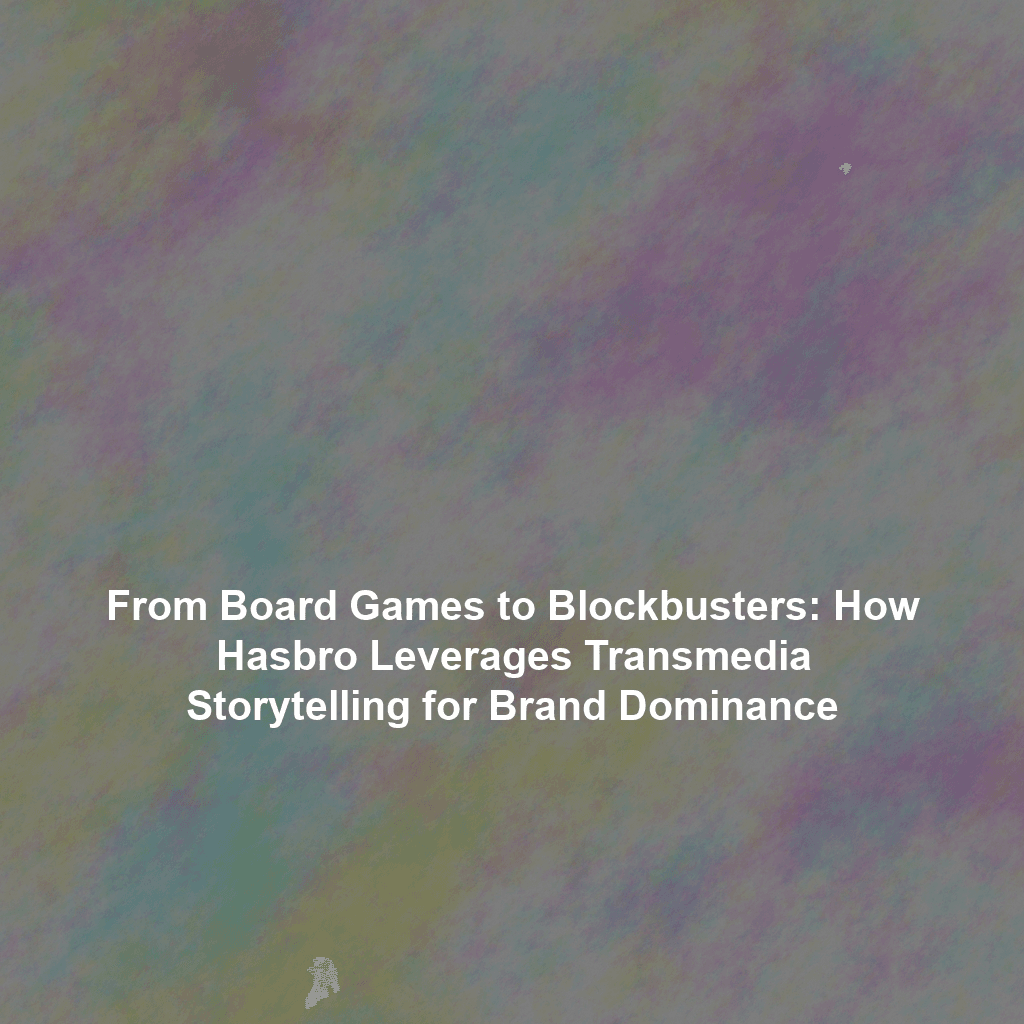Hasbro. The name conjures up images of family game nights, action figures battles, and maybe even a pony or two. But beyond the toy aisle, Hasbro has quietly built a transmedia empire, extending its brands into movies, television shows, comics, video games, and beyond. This strategic approach isn’t just about selling more toys; it’s about building deeper connections with audiences, fostering brand loyalty, and generating substantial revenue streams far beyond what plastic and cardboard alone could ever achieve.
The Power of Transmedia Storytelling
Transmedia storytelling is more than just adapting a toy into a movie. It’s about crafting a unified narrative experience across multiple platforms, each contributing a unique piece to the overall story. Think of it as a puzzle where each media format—a film, a video game, a comic book series—offers a different piece, enriching the overall picture and encouraging consumers to engage with the brand on multiple levels.
Why Transmedia Works for Hasbro
For Hasbro, this approach works brilliantly because many of their core brands already possess rich lore and established characters. Properties like Transformers, My Little Pony, and Dungeons & Dragons have decades of history, intricate backstories, and legions of dedicated fans. Transmedia storytelling allows Hasbro to tap into this pre-existing fanbase and expand the narrative universe, attracting new audiences along the way.
Successful Transmedia Initiatives: A Case Study
Let’s examine some of Hasbro’s triumphs in the transmedia arena:
Transformers: More Than Meets the Eye
The Transformers franchise is a prime example of successful transmedia execution. Starting as a toy line and animated series in the 1980s, Transformers has evolved into a global phenomenon encompassing blockbuster movies, video games, comics, and countless merchandise spin-offs. The key to its success lies in consistent world-building and character development across these different platforms, even if the storylines sometimes diverge. While the Michael Bay films received mixed reviews, they undeniably boosted brand awareness and introduced Transformers to a new generation. The animated series, like Transformers: Prime, also offered a different, often more character-driven, perspective on the same core conflict, further engaging fans.
My Little Pony: Friendship is Magic Across Platforms
My Little Pony: Friendship is Magic revitalized the franchise, appealing not only to its target demographic of young girls but also to a surprising adult fanbase (“bronies”). The animated series’ clever writing, memorable characters, and positive themes translated well into comics, video games, and a feature film. Hasbro strategically leveraged social media to build and nurture the My Little Pony community, fostering a sense of belonging and encouraging fan-generated content, further amplifying the brand’s reach.
Dungeons & Dragons: From Tabletop to Screen
Dungeons & Dragons is experiencing a resurgence thanks to smart transmedia initiatives. Beyond the core tabletop game, Hasbro, via Wizards of the Coast, has expanded its reach through video games like Baldur’s Gate 3 (a massive critical and commercial success), streaming shows like Critical Role, and the movie Dungeons & Dragons: Honor Among Thieves. These expansions introduce new players to the rich world of D&D, while existing fans can explore the lore and characters in new and exciting ways. The success of these ventures drives interest back to the core tabletop game, creating a virtuous cycle.
Learning from Less Successful Ventures
Not every transmedia attempt is a guaranteed hit. While Hasbro has enjoyed significant success, there have been some stumbles along the way. Projects that lack a compelling narrative, fail to resonate with the existing fanbase, or suffer from poor execution can ultimately damage the brand. One could argue that certain less well-received movie adaptations of Hasbro properties highlighted the importance of staying true to the core essence of the brand while simultaneously offering a fresh perspective.
The Strategic Rationale: More Than Just Toys
Hasbro’s commitment to transmedia storytelling stems from a clear strategic rationale:
- Brand Awareness: Movies, TV shows, and video games significantly increase brand visibility, reaching audiences who might not otherwise be exposed to Hasbro’s toys.
- Brand Loyalty: Engaging narratives and immersive experiences foster a deeper connection with the brand, turning casual consumers into loyal fans.
- Revenue Diversification: Transmedia initiatives generate revenue from multiple sources, reducing reliance on toy sales alone.
- Evergreen Content: Well-crafted stories can endure for years, continuing to generate revenue and attract new fans long after the initial toy release.
The Future of Hasbro’s Transmedia Strategy
Looking ahead, Hasbro is likely to continue investing heavily in transmedia storytelling, exploring new platforms and formats to engage with its audience. The rise of streaming services, virtual reality, and augmented reality presents exciting opportunities to create even more immersive and interactive experiences. The key to success will be maintaining a consistent brand identity while adapting to the evolving media landscape and listening to the needs and desires of its passionate fanbase.
Conclusion
Hasbro’s journey from board games to blockbusters is a testament to the power of transmedia storytelling. By extending its brands beyond the toy aisle, Hasbro has built a loyal fanbase, diversified its revenue streams, and cemented its position as a leader in the entertainment industry. As the media landscape continues to evolve, Hasbro’s strategic embrace of transmedia storytelling will undoubtedly play a crucial role in its continued success.
 Skip to content
Skip to content

